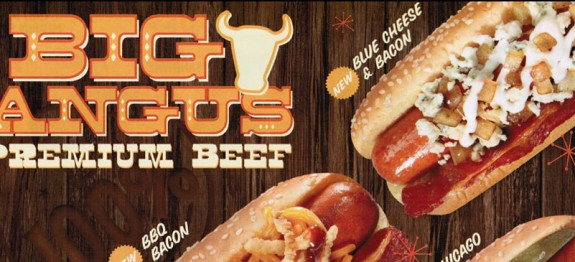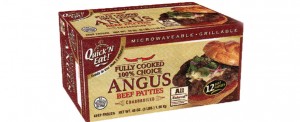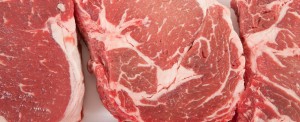Angus Beef vs Certified Angus Beef
Marketing wheels never stop turning. If sales are down or there is a need to boost profits begin promoting something old as if it were new. Sound familiar? The motive is getting uninformed consumers to spend more thinking they are buying a higher quality “premium” product. The recent trend is heavily promoting Angus steaks, hamburgers, ground beef, hot dogs, and frozen hamburger patties.
A prime (no pun intended) example is the growing number of supermarkets and restaurants promoting the sale or use of Angus beef. Certified Angus steaks and ground beef sells for a premium price compared to lowly old choice and prime steaks and ground beef.
What’s the issue? Isn’t Angus beef superior in taste and texture to ordinary, everyday, ho hum beef sold in the United States? Well, yes and no. There is Angus beef and then there is Certified Angus Beef. What’s the difference between Angus Beef vs Certified Angus Beef?
Most beef cattle raised for the consumer market in the United States is Angus which originated in Scotland. Their color is black or red. Black and red angus cattle are identical except in the United States which treats then as two separate breeds. Black Angus is very common and the name of a national steak restaurant chain.
The bottom line is Americans have been eating Angus beef for decades. Labeling and charging more for ordinary Angus ground beef and steaks is a scam. Just like labeling beef, pork or chicken as “all natural” is a scam. Cattle is raised in the United States in feed lots using antibiotics to decreases disease and beta agonists to increase muscle growth and shorten the time to market. To the beef industry, that is considered natural. Forget about the lonely cowboy herding cattle across a wide open range.
You can buy certified Angus beef that must meet 10 specific quality criteria to achieve certification, but you will rarely find certified beef at your supermarket, super center, warehouse store or in your fast food burger or hot dog. To find certified Angus beef retailers in your area you can click on the link below which will take you to the certified Angus beef website or visit www.certifiedangusbeef.com.
Criteria for Certified Angus Beef
Where to Buy Certified Angus Beef
Butcher shops generally offer higher grades of beef, poultry and fish compared to local and national supermarkets. You pay a premium for certified beef just like you pay a premium for prime beef because less than 10 percent of the cattle raised in the United States meet the requirements for prime and certified Angus beef.
Is certified beef better than non-certified beet and worth the extra cost? In some cases the answer is yes. You will be buying beef served by high end steak restaurants. Most low to mid priced steak restaurants serve choice beef. Premier steak restaurants may have even more stringent requirements than certified Angus beef and proprietary aging processes to enhance the flavor and texture of their beef. You’ll pay an even higher premium due to the time involved and increased waste inherent in the process. My experiences have been mixed. There are few steaks worth $50 or more. When you are served a great steak it is well worth the price. But great steaks are rarer than you think. There was a time, in a begone era, when mid-priced steak houses served excellent steaks. Today, it is hit and miss even at chains that have been in business for decades. Most national restaurants are operated by business majors.
Terms like premium and natural are meaningless marketing terminology to convince consumers they are buying a better product. It is a high stakes game with consumers as pawns.
Beef and steak restaurants have made a dramatic comeback for the low fat diet days of the 1980s. Supermarkets replaced low fat USDA select grade beef with choice grade beef.
Properly cooked choice or prime grade beef bought from a reliable source can rival most mid and high price steak houses for a fraction of the price. The secret is proper cooking.
Like overcooked pasta, it only takes a few minutes to turn a tender, flavorful piece of beef into a charcoal bricket even if it certified Angus or prime beef.
Here are a few tips the next time you are out shopping for steak or ground beef:
- Check steak for marbling and fat content. More marbling means more flavor and tender steaks. You can trim off excess fat after cooking. The USDA choose steaks in the photo below are almost as tender and flavorful as prime steaks costing more than twice the price.
- Check percentage of lean to fat for ground beef. There is no advantage paying more for Angus beef vs. non-Angus beef. In the United States they are identical unless the beef was imported.
- For certified Angus Beef, check the Certified Angus Beef website for a retailer near you.
Like Shakespeare said, “What’s in a name? That which we call a rose by any other name would smell as sweet.“
When shopping or dining out, save your money and pass on higher priced steaks, hamburgers, and hot dogs labeled Angus unless it specifies Certified Angus. As for hot dogs, you rarely know what does into the emulsion used for making hot dogs.




